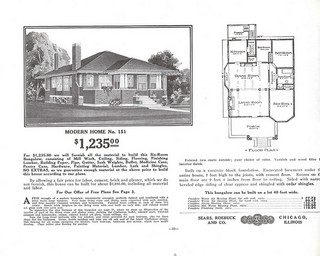
Rose Thornton recently came to my town to present her passion: the Sears home, which was very popular in certain places from around 1908 until World War II. These “kit homes,” actually made by at least six other companies besides Sears, saved many buyers some 30 percent of the cost of a conventional stick-built home.
The Sears home was cheaper in part because typically the homebuyer built his or her own house. He still had to have some building skills, but he didn't have to be a carpenter, because the thousands of pieces that made up a house were pre-cut at the mill before they were shipped.
The other key to the affordability of the Sears house was the railroad. Most kit homes were built in places that were near a rail line, since most goods in those days were shipped that way. Much of the cost savings might have been lost if materials had to be shipped further by truck.
Listening to Thornton talk about how exciting it is to find a Sears home, I thought of other, more recent housing trends that have sparked the imagination of affordable housing advocates.
I recall hearing the Canadian architect Avi Friedman speak once about his “Grow Home“ concept. His idea was that young families needed a relatively small, simple yet elegant home to live in, that they could finish building themselves as they acquired the means. What a novel idea, to allow people to only pay for as much house as they actually needed, rather than going into debt to pay for too much.
Another thing that made the Grow Home economical was that many of its parts were factory-made. The modular home industry, which is responsible for many of the houses built in the working-class county where I live, churns out homes with lots of factory-made components. But the houses aren't all that much more affordable, and part of the challenge is that people want the finished product to look just like their neighbor's large, stick-built house.
More recently the tiny house movement has caught my attention. The problem I see with tiny houses, which is perhaps similar to a shortcoming of Grow Homes, is that people in this country really do want more space than these affordable products can offer them.
Maybe the Sears or kit home phenomenon ought to be brought back somehow. To make it work, people would have to get training in the basic building skills that our population used to have. In the absence of a big drop in land prices or the cost of materials, something has to give.
(Photo by Rachel Shoemaker CC BY-NC-ND)





Comments